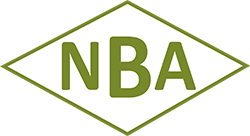BETTER NEWS FOR BEEF FARMERS – AT LAST
31st October 2014
Region: National
FACTORS affecting this year’s dismal beef trade will not be at play in 2015. Debbie Butcher, senior beef analyst at the Agriculture and Horticulture Development Board (AHDB) is looking forward to explaining to farmers at Beef South West on November 13th at Westpoint why prices for finished stock may be better next year.
“First of all, 2013 was the year of Horsegate,” explained Mrs Butcher. “That was extraordinary and resulted in a price that proved to be unsustainable for the industry to absorb. The past 12 weeks has seen a better performance in the retail environment, fuelled by promotional activity.”
Mrs Butcher highlighted the other area detrimentally affecting this year’s beef price: numbers of cattle finished both in Ireland and England this year.
“Calf registrations in 2011/2012 showed more cattle would enter the food chain this year. In fact, to date, there have been 137,000 more cattle killed this year than last in Ireland - which is a lot of beef. By the year end this figure is forecast to reach 150,000. Of that 90% is exported and half those exports come to the UK.”
But these cattle have now nearly all gone through the system. And data shows production will be back by between seven and 10% next year – a massive volume. This obviously improves prospects. However, she was keen to point out the farm gate price in Ireland is worse than on the main land. It is unlikely to improve until the New Year.
This differential has a significant effect on how much beef is imported into the UK. “When the price differential between Ireland and the UK is 70p/kg – as it currently is – it has proven to be inevitable retailers have an option to buy cheaper beef from Ireland,” said Mrs Butcher. “When that differential shifts to 40p/kg, things look better for the home trade but we need to get back to 20p/kg difference for UK’s prices to be in favour. 2011 was the last time there was a parity of prices.”
Such a poor Irish price has forced its industry to focus on improving business in the global market, such as Japan. Here, there has been some support from the retail sector. Certain retailers have made an effort to source UK product, however many consumers still do not see the difference between that and beef produced in Ireland. At the same time we are still living in a time where austerity rules and the export trade, at 15% of total production, is still 5% lower than the industry would like to see it.
“The last thing I want to do is mitigate the problems farmers have faced over the past 12 months. But I am very relieved to be able to forecast some better news for next year – especially when farmers have been paying good prices for stores whilst producing no margin on finished stock,” said Mrs Butcher.
“It is a good time, however, to focus on the weaknesses in any enterprise. And thankfully it has been a good summer so there is plenty of forage about going into this winter. It is not for everyone, but some of these niches markets which focus on specific products and breeds will help add value to some cattle. “ ENDS

